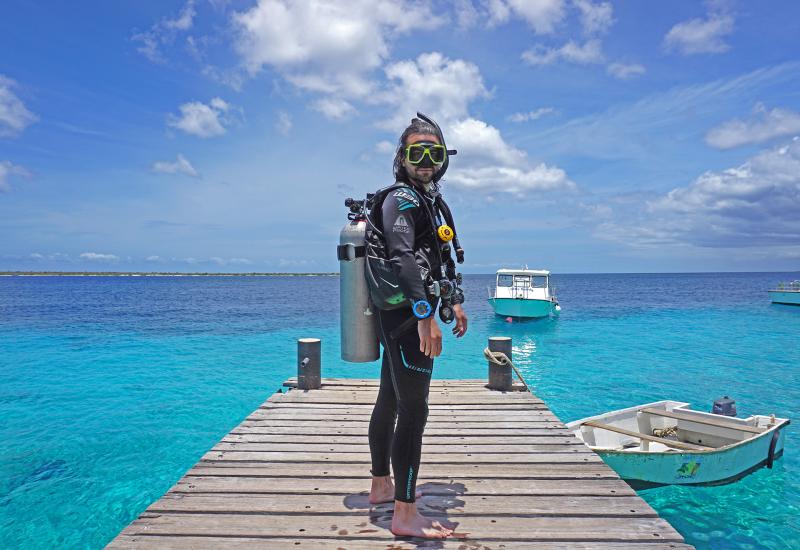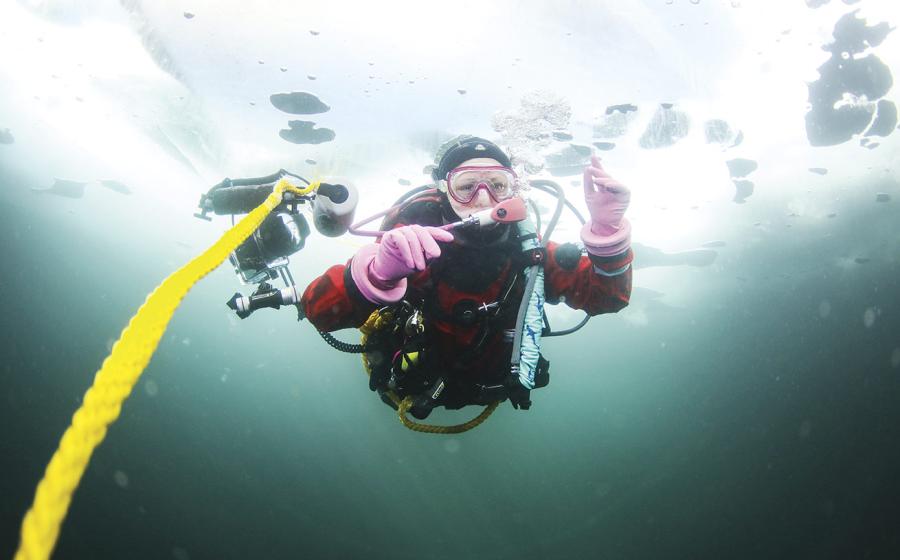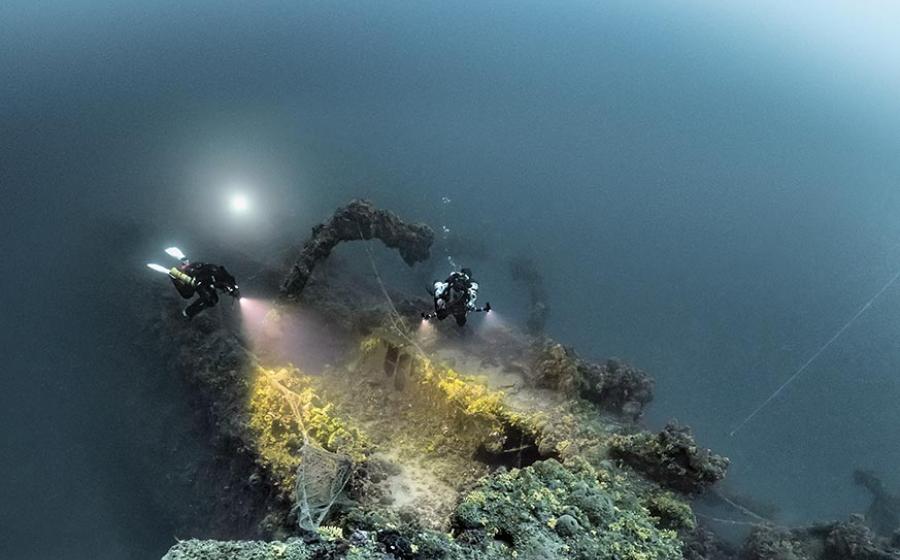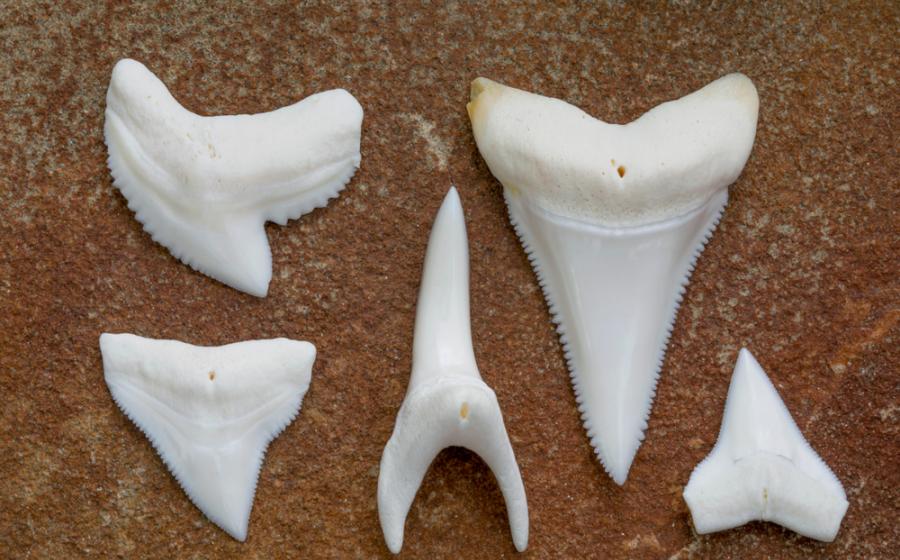Tips for Low-Vis Diving
| Illustration by Thomas Bradley Illustration & Design| Pause. Near the bottom, hang on the anchor line to recheck your equipment and re-evaluate the situation. Once your eyes have adapted to the dark, you may be able to see better than you expected. And the vis is often better below 20 feet. Plankton and other biological growth is usually thickest where there's more light. Try your dive light does it help or hurt? (Don't shine it in your buddy's eyes.) Hold it to one side to reduce reflection off suspended particles.
Be neutral. Fine-tune your buoyancy before leaving the anchor line. If you have to kick to stay off the bottom, you'll stir up silt.
Set a course. Whether you follow a compass course from the anchor line or lay out a guide line or do both depends on how much you can see. So does the route you follow. In the worst conditions, a short, straight out-and-back route is probably best.
Believe your instruments. If you think, "That compass can't be right, I've been going in a straight line," ensure that the compass is level and the card is swinging freely. If it is, believe your compass, not your instincts. Likewise, check your depth gauge and pressure gauge often, and believe them. It's easy to drift upward without visual references, and you'll use air faster than normal if you feel a little anxious.
Fin gently. It can be hard to stay close enough to the bottom to see it, yet far enough not to stir up silt with your fins. But try. Use the frog kick so you don't direct jets of water at the bottom. Or use the cave diver's posture: head slightly down, feet slightly up.
Close your eyes. If you become disoriented, close your eyes and breathe easy.
Limit your movement. To make the most of a low-vis dive, settle in one spot and focus on the macro scale. There's a whole world of violence, greed, sex and beauty in a square yard of ocean.










